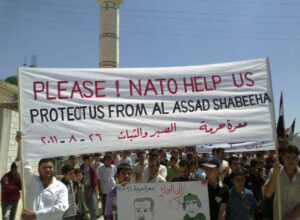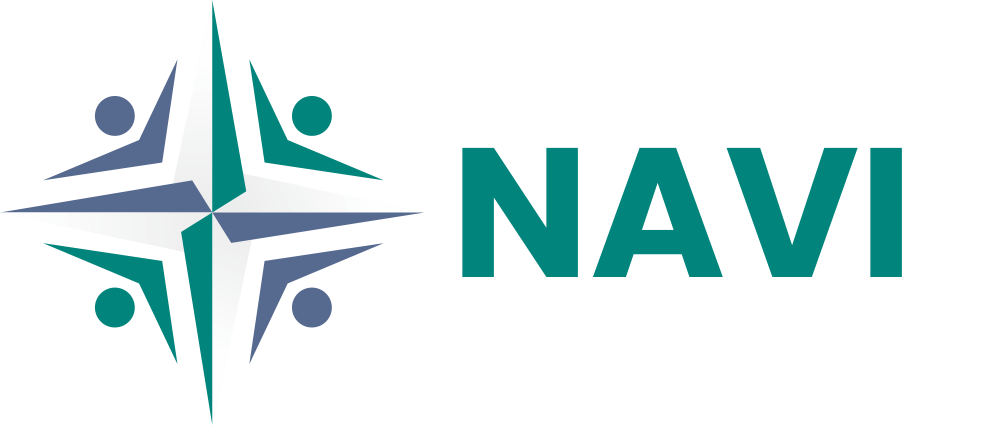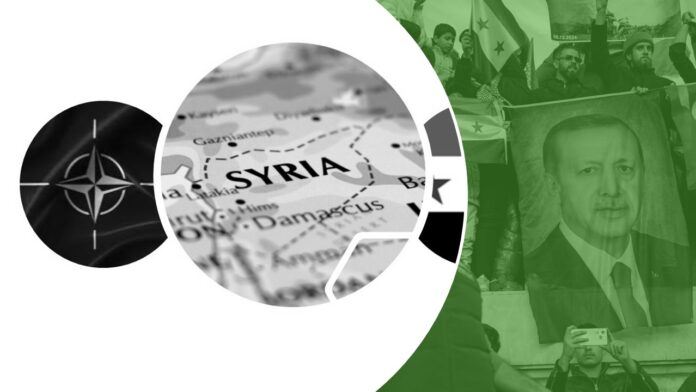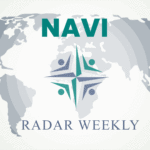Umit Kurt- Deputy Director (Research and Analysis)
Introduction
The end of Assad’s rule after fifty-three years of his family’s reign has created a power vacuum. The rebel forces, a conglomerate of Hayat Tahrir al-Sham (HTS), the Syrian National Army, and other groups, have taken control of the country.
Stability in the Middle East is of strategic interest to NATO, and crises, conflicts, and fragility in the region can have direct consequences for Allies’ security. The current situation in Syria with the situation in Gaza has become the most acute crisis in the immediate southern neighborhoods of NATO. The consequences of the fall of the Asad regime in Syria on Euro-Atlantic security cannot be ignored and need to be assessed. NATO has a strategic interest in averting the further spread of conflict in the eastern Mediterranean, the Gulf, and the Red Sea.
The recent events in Syria, including the toppling of Bashar al-Assad’s regime, have introduced a new level of complexity to the region. It is imperative to objectively assess the situation, particularly concerning the role of NATO member Türkiye, the US-backed Syrian Democratic Forces (SDF), and the overall strategy of the United States in this complex environment.
In the Department Press Briefing – December 10, 2024, Department Spokesperson Matthew Miller addressed U.S. policy on Syria, emphasizing that the U.S. does not recognize Hayat Tahrir al-Sham (HTS) as a governing authority. He reiterated support for a Syrian-led, inclusive, and non-sectarian political transition that upholds minority rights, ensures humanitarian aid, prevents terrorism, and dismantles chemical weapons. Miller stressed that HTS will be judged by its actions and highlighted the return of Austin Tice as a priority. While monitoring regional discussions involving HTS, the U.S. maintains its commitment to a peaceful resolution and cannot support designated terrorist organizations.
Who is the principal behind HTS?
While it’s difficult to pinpoint one single “principal” behind Hayat Tahrir al-Sham (HTS), the sources suggest a complex web of influences rather than a straightforward, singular controlling entity.
HTS emerged from the Syrian civil war, evolved from Al-Qaeda affiliates, and is largely an independent actor with its objectives. The group’s origins trace back to Jabhat al-Nusra, which was formed in 2011 and later merged with other groups to become HTS in 2017. It has since established itself as a dominant force in Idlib province, demonstrating a capacity for governance and military control. This evolution indicates that HTS’s primary driver is the pursuit of power and influence within Syria, rather than direct control by an outside force.
Türkiye deserves special notice
Recent public discourse, including statements from President Donald Trump, has highlighted differing perspectives on the extent of Turkish influence in Syria. President Trump has stated that “Türkiye controls the rebels in Syria who were responsible for toppling Bashar al-Assad’s regime”. He further claimed that Turkish President Recep Tayyip Erdoğan orchestrated an “unfriendly takeover” of Syria, a goal Trump believes Türkiye has had for a long time. He describes Türkiye as a major force with a powerful army, suggesting they are now essentially controlling the region. However, these claims require a more nuanced examination.
Former U.S. Ambassador to Türkiye, David Satterfield, offers a crucial counterpoint. Appearing on “The Daily Report,” Satterfield stated that “Trump is exaggerating the extent of Türkiye’s influence on the Syrian rebels”. While acknowledging that Türkiye has indeed played a significant support role, particularly for groups like Hayʼat Tahrir al-Sham (HTS) controlling parts of the country, Satterfield clarifies that “it’s an exaggeration to say that Türkiye controls all of the forces now present in Damascus.” He highlights that Türkiye’s direct and significant control is primarily along its border with Northern Syria, where it supports the Syrian National Army. This area is considered a buffer zone, a long-standing goal of Türkiye to secure their border and protect against attacks coming from Syria. Türkiye’s actions are also influenced by its concern over Kurdish nationalism, and the country has engaged in several cross-border operations.
Despite the lack of an official response to Trump or Satterfield to date, it seems that Erdoğan is attempting to capitalize on the rapid victory of HTS, both at home and in Syria. He is enjoying the celebrations that are being shared in state media and on social media, which proclaim him as the architect of victory in Syria and the Caliph of the Islamic world. Ibrahim Kalin, Erdogan’s intelligence chief, was seen praying in the Umayyad Mosque and driving through the streets of Damascus with Abu Mohammed al-Jolani. Türkiye has extended a proposal to provide military training to Syria’s new government led by HTS after the Asad period. Defense Minister Yasar Guler highlighted the opportunity for the new Syrian government to stabilize the nation. In the meantime, reports imply Assad alleged Türkiye of backing Sunni rebels to overthrow him, as Iran vowed to address Ankara’s actions diplomatically. Türkiye’s Foreign Minister Hakan Fidan was in Damascus as the first foreign minister to visit Damascus since Assad’s fall and met with Syria’s de facto leader.
In Syria, Türkiye—a NATO member—works through the Turkish Private Military Company (PMC) SADAT International Defense Consultancy, in coordination with the Turkish National Intelligence Organization (Milli İstihbarat Teşkilatı, MIT). Together, they play a key role in training and overseeing Turkish-backed proxy forces and militias, while also extending their influence to conflicts in Libya and Nagorno-Karabakh. These activities have drawn criticism from organizations such as the United Nations, which has warned that SADAT’s operations pose a threat to fundamental rights, including the right to life, freedom from torture, and personal liberty. Additionally, SADAT’s involvement in arming and training militias with extremist ties has raised serious concerns about regional security and the proliferation of violent non-state actors.
In this manner, Türkiye’s relationship with HTS is the most significant external influence, as HTS has, at times, aligned with Turkish strategic goals. Türkiye has supported certain HTS elements in their fight against the Syrian government and Kurdish groups, and has been described as an ally of the HTS. There is evidence of pragmatic collaboration, such as HTS fighters escorting Turkish Army units.
However, Türkiye also considers HTS a terrorist organization, which adds complexity to the relationship. In his article, Strategies of Turkish Proxy Warfare in Northern Syria, Engin Yüksel analyzes Türkiye’s intricate balancing act in managing various armed factions within Idlib, Syria. Türkiye’s divide-and-rule strategy within HTS, aimed at marginalizing dogmatic factions such as Tanzim Hurras al-Din, reflects Ankara’s attempt to maintain leverage. As Yüksel argues, this peer-to-peer collaboration, while mutually beneficial in resisting Syrian regime offensives, underscores HTS’s commitment to preserving its autonomy within the broader geopolitical landscape of northern Syria, suggesting Türkiye is not a principal but rather an outside actor trying to shape HTS.
Other actors, such as Saudi Arabia and Qatar, have also been implicated in supporting Islamist groups in Syria, which may have indirectly benefited HTS. The sources highlight that there are divisions within HTS, with some factions more aligned with Türkiye while others maintain a more dogmatic and independent stance.
These dynamics indicate that HTS is not solely a proxy of any external actor but rather a complex organization with internal power struggles and a unique agenda navigating a complicated regional landscape.
A point of concern: “There was no country to support us.”
On the other hand, in the proxy war concept, proxies cannot be controlled after a certain stage. “There was no country support us” said Abu Mohammed al-Golani, on December 12, 2024, praising the efforts of his fighters. As argued, every plan has unforeseen or unavoidable complications. So, the war of proxies has two imminent dangers. One is that as proxies win, they feel less dependent on their principals and start operating on their own. The second is that the more proxies lose, the angrier they become against their principals and the more they act independently. Anyway, all the proxies begin operating on their own. It may be too early to prove this theory in Syria, but Abu Mohammed al-Golani, who said, “There was no country support us.” against the usual suspects, may have fired the first flare.
Key Considerations for NATO: From a Conflict of Interests Between its Members to Designated Terrorist Freedom Fighters

HTS- as a designated terrorist organization and HTS’s legitimization
HTS’s role led by Abu Mohammad al-Jolani (also known as Ahmed al-Sharaa) in ousting Assad and its current leadership position in the formation of a new government has triggered a critical debate over its designation as a terrorist organization. It is important to note that HTS is led by Abu Mohammad al-Jolani, a U.S.-designated terrorist.
The UN Special Envoy for Syria, Geir Pedersen, has suggested that HTS’s designation should be reviewed in light of recent events and their actions of unity and inclusiveness since the resolution was adopted.
Hayat Tahrir al-Sham (HTS) is a designated terrorist organization by the UN Security Council, the US, the EU, and the UK, stemming from its links to extremist groups like al-Qaeda and the “Islamic State” (IS). That’s why the United States labels HTS “a foreign terrorist organization,” and the UK designates it as a “proscribed terrorist organization.” The EU has HTS on a UN-based list of sanctioned organizations but not on its autonomous list.
HTS has made various efforts to legitimize and redefine itself as a state-like administrative regime that recognizes religious diversity domestically and internationally. Since the fall of Assad, HTS leadership has referred to its leader by his real name, Ahmed al-Sharaa, which may be an effort to distance the group from its past. The group has presented itself as more moderate by issuing statements that it will protect religious and other minorities. To do so, they have offered assurances to minorities and have pledged reforms to its security forces and prison system. HTS is also committed to collaborating with the international community to monitor chemical weapons. It has also expressed a desire to operate within a free-market economy.
Although the UN has also worked with HTS in Idlib for years to deliver humanitarian assistance, NATO member perspectives on HTS’s legitimization are complex. While some NATO members prioritize countering terrorism and may see a benefit in engaging in HTS, others are wary of legitimizing a group with a history of violence and potential for human rights abuses.
While HTS is designated as a terrorist organization, the US, EU, Türkiye, Germany, and the UK are in contact with HTS to encourage an inclusive transition. Despite White House Spokesperson John Kirby saying on December 2, referring to HTS, that “These are not good folks,” after HTS began making rapid gains, the US has made it clear that there is no legal barrier to speaking with a designated terrorist group. This indicates that while formal recognition and support are restricted, communication is still considered essential.
On the other hand, some NATO members are concerned that engaging with HTS could be seen as undermining their efforts to counter Russian and Iranian influence in the region and that such engagements could also play into the narratives of strategic competitors.
Despite claiming to have broken from Al-Qaeda in 2016, the group is still viewed with suspicion due to its past ties to extremist groups. There is still a concern that Syria could devolve into sectarian fighting. Furthermore, HTS’s imposition of its interpretation of Sunni Islam on the diverse populations in areas it controls and accusations of human rights violations further undermine its legitimacy in the eyes of NATO countries. These nations have stated that they will judge HTS by its actions, not words, and are monitoring closely how they and other parties to this conflict treat all civilians in areas they control.
This diversity of viewpoints within NATO hinders the development of a unified strategy and makes it challenging for the alliance to present a coherent stance on HTS. Therefore, any decision to engage with HTS must consider the broader geopolitical landscape and how it might affect the alliances’ cohesion.
NATO Members: Conflict of Interests after the fall of Asad
NATO members have a number of conflicting interests in Syria, stemming from differing priorities, threat perceptions, and relationships with regional actors. A symptom of years of limited and disjointed hands-off approach has been the disintegration of the U.S. and NATO’s strategic partners in both Syria and the surrounding region. These conflicts hinder the alliance’s ability to formulate a cohesive policy and effectively address the complex situation in Syria.
NATO members have different priorities regarding Syria. Some members prioritize countering terrorism and preventing the resurgence of ISIS, while others focus on humanitarian aid, managing refugee flows, or containing Iranian influence. For instance, the US has focused on countering ISIS and Iranian influence, while some European nations are more concerned with the refugee crisis and counter-terrorism efforts.
NATO members also have different threat perceptions when it comes to Syria. Some members view the Assad regime as the main source of instability, while others are more concerned with the rise of extremist groups or the expansion of Russian and Iranian influence. For example, while some NATO members have been critical of the Assad regime and called for his removal from power, Türkiye has at times cooperated with Russia and Iran, both allies of Assad.
The US and Türkiye
Al-Tanf garrison
The United States maintains a presence of about 900 soldiers in Syria at the al-Tanf garrison. These forces support Kurdish partners, who are part of the Syrian Democratic Forces (SDF). As Zafer Kızılkaya et al. rightly point out, the support received from the U.S. remains crucial for the SDF/YPG to endure. As Satterfield stressed, the SDF/YPG also controls two significant facilities in Northeast Syria: “One a prison camp for some 8,000 foreign terrorist fighters, and the other a facility for some 40,000 dependents of those fighters.” To Satterfield, the US does not support the fragmentation of Syria, and it has been clear that it supports a unified Syria and does not support the eFmergence of statelets or sub-states. The US is also concerned that the release of ISIS fighters in these camps would further destabilize the region.
The U.S. is actively engaged in a dialogue with Ankara to balance Türkiye’s right to self-defense against terror with the need to maintain the partnership with the SDF/YPG, which has been crucial to the fight against ISIS. This is a complex balancing act, as the US recognizes Türkiye as a NATO Member and ally but also sees the need to preserve the partnership with the SDF/PYD to maintain stability in the region.
Türkiye’s actions in northern Syria, particularly its conflict with Kurdish groups, create significant friction with other NATO members. As a NATO member, Türkiye’s actions in Syria since 2016 concern the alliance. It’s critical to understand the complexities of Türkiye’s motivations, which include securing its border and countering Kurdish groups. At the same time, it is essential to acknowledge the perspectives of other actors, including other NATO members, the US, its SDF partners, and regional partners. While the US has supported the Kurdish-led Syrian Democratic Forces (SDF) in the fight against ISIS, Türkiye views these groups as extensions of the Kurdistan Workers’ Party (PKK), a terrorist organization. It thinks that there is no room for SDF/YPG in Syria’s future. This has led to clashes between Turkish forces and US-backed Kurdish groups, putting two NATO allies on opposing sides. The US supports the SDF, who are important partners in the fight against ISIS, and these forces control important facilities in the region. The US has 900 troops in Syria to support the SDF. The US is engaged in an ongoing dialogue with Türkiye to balance Türkiye’s preventing further destabilization. The US supports a unified Syria and is against the creation of sub-states or statelets.
On January 6, 2025, Turkish Foreign Minister Hakan Fidan stated that the YPG’s suppression in Syria was “imminent” and that Türkiye would not allow the YPG to have a safe heaven in the country. Since the civil war started in Syria in 2011, Türkiye previously made several incursions into Syrian territory.
On January 6, 2025, President Erdoğan stated that Türkiye is ready to intervene if Syria disintegrates following last month’s rebel overthrow of Assad.
The US and Turkish strategies for managing the war in Syria sharply diverged in 2014, with the former paring down its strategy to battle the Islamic State of Iraq and al-Sham (ISIS) while the latter maintained political and military support to forces opposing both the Assad regime and the US-backed Syrian Democratic Forces (SDF). This created a zero-sum game for the two treaty allies: US anti-ISIS operations exacerbated the top threat to Turkish security by strengthening the People’s Defense Units (or the YPG, the controlling component of the SDF and an affiliate of the transnational, anti-Turkish Kurdistan Workers’ Party terror network). Meanwhile, Turkish anti-YPG operations threatened to destabilize tenuous security conditions in areas where US forces operate.
The United States and Türkiye managed the tensions arising from this counter-alignment through careful diplomacy, but the ten years of bitterness badly damaged bilateral trust. Syria may not be the only reason that US and Turkish officials and people have come to see putative partners as regional antagonists, but it has been a leading cause. Trust will improve slowly, if at all, but there is one reason for guarded optimism: The major factors driving this counter-alignment have fundamentally changed, opening a window to shift back to the cooperation that prevailed in the early days of the Syrian revolution (specifically from 2011 to 2013).
Even if transitional, the emergence of a recognized central government in Damascus alters the dynamic that previously fueled the counter-alignment between the U.S. and Türkiye. The absence of such a government had compelled the U.S. to depend on provisional local administrations backed by its military, a move that triggered friction with Türkiye. With a recognized government in place, the U.S. might find it unnecessary to continue relying on these local administrations, potentially reducing the points of conflict with Türkiye.
Changes in regional priorities and influence could also contribute to this shift. Initially, the U.S. narrowed its focus to combating ISIS, while Türkiye sustained broader support for forces opposing both the Assad regime and the U.S.-backed SDF. However, with the Syrian transitional government consolidating its control, this zero-sum dynamic may diminish. Should ISIS be significantly weakened and the new Syrian government address Turkish security concerns, the strategic divergence between the U.S. and Türkiye may become less critical. Furthermore, the perception that other regional actors wielded greater influence over Syria than Türkiye also fueled the alienation between the two countries. As the transitional government solidifies its position, this dynamic could evolve. If Türkiye believes it can play a more significant role in shaping Syria’s future through its relationship with the new government, it might view the U.S. as less of a rival for regional influence.”
In consolidating control, the Syrian transitional government still faces significant challenges from domestic and foreign forces, but the status quo formed by those three factors has been shattered. Whatever else happens in the country from 2025 forward, Syria’s salience as a driver of US-Türkiye alienation will almost certainly decline.
Russia and Israel
The Syrian conflict has been complex, with numerous actors and varying degrees of influence. Russia‘s influence in Syria has decreased, and it may have been unable to deploy sufficient strength to curtail rebel advances. Russia has also begun moving warships from its naval base in Tartus. Without the bases in Syria, Russia’s ability to project power and support its partners worldwide is likely to be hindered. Iran has also been significantly affected by the fall of Assad, who was a close regional ally. After Asad, Iran’s capacity to assign force in the region, particularly to support Hezbollah, is reduced. Israel has been targeting Iranian-backed militias in Syria. Israel also targeted chemical weapons sites and long-range rockets to stop rebels from seizing them.
As much and as quickly as possible, Israel’s move inside Syria after Asad’s fall has further exacerbated tensions among NATO members. Türkiye has taken a strong anti-Israel stance, while others in the alliance have stayed silent. This division creates further political tension, making securing a consensus on Syria’s territorial integrity less likely.
In addition, Türkiye’s ties with Russia and Iran clash with the interests of those NATO members who view Russia and Iran as destabilizing forces in the region and globally as well. This difference undermines NATO’s ability to present a united front.
Conclusion
In summary, following the fall of the Assad regime, HTS has taken control of Syria, creating a complex and uncertain situation. NATO members have significant conflicts of interest in Syria arising from differing priorities, threat perceptions, and relationships with regional actors. These conflicts have hampered the alliance’s ability to formulate a unified and effective approach, limiting its influence in the region and creating space for other actors to pursue their agendas.
These conflicting interests and priorities have resulted in a lack of a unified NATO strategy for Syria. While NATO has made statements about the need for a peaceful resolution, it has struggled to take concrete actions due to the diverging interests of its members. Some members favor a more assertive interventionist role, while others prefer a more cautious and hands-off approach, limiting NATO’s overall impact.
During the last 14 years, it was clear that inaction was not an option for NATO, leading to negative consequences. Today’s hands-off approach will also deepen these negative consequences. To be more effective, NATO should adopt a unified approach to addressing and prioritizing consensus-building and engage in more active and transparent dialogue to reconcile its members’ divergent interests.
On the other hand, favoring a more assertive interventionist role by NATO Members or regional actors will also not be helpful for stability and favor of the Syrian people and the region. To foster stability, NATO should engage with regional partners and actors within Syria, supporting a peaceful, Syrian-led transition that respects the country’s territorial integrity, sovereignty, and national unity while protecting minority rights.
Reassessing relationships with key stakeholders, particularly with Türkiye and Syria’s interim Government, potentially with HTS, and with Israel, contingent upon their actions aligning with international norms, is necessary. At that point, a strategic military presence may be needed to ensure stability, at least for some time.
Additionally, NATO should broaden its Southern Neighborhood strategy to include cooperation with African and Middle Eastern countries. Prioritizing dialogue and diplomacy are crucial while maintaining awareness of potential threats, and NATO must remain flexible in its strategic planning to adapt to the evolving situation.
As a graduate of the U.S. Army War College and a former senior civil servant, Mr. Umit Kurt is dedicated to advancing the field of international relations as a Ph.D. researcher at UCLouvain in international relations in Belgium.
His research delves into the dynamics of International Institutions with their diverse members, the ethics of reconciliation, the complexities of migration, and the overarching governance of digital ecosystems.
With a career that spans over two decades, he has been at the forefront of leading and contributing to task forces in various capacities, including NATO Peace Operations and strategic NATO Headquarters.
Mr Kurt’s professional journey has been enriched by a Master of Business Administration. His expertise in Global Governance for Digital Ecosystems was honed through a consultancy role at PA Europe-Belgium, a prominent multinational public affairs firm.





